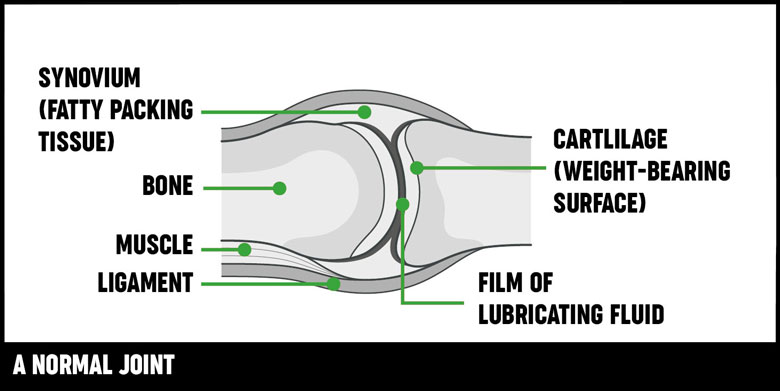How to ease joint pain
Joint pain is a very common problem with many possible causes1. Pain in the knees, shoulders and hips is most common, but pain can occur in any of your joints from your ankles to your hands. Joint pain ranges in its severity. Some people suffer from crippling joint pain that restricts their daily life, while others suffer from joint pain flare-ups that last a couple of days.
No matter the type of joint pain you may suffer from, it’s important to know how you can deal with it. But first, let’s start from the beginning.
What is a joint?
A joint is where two or more bones meet, such as fingers, knees and shoulders. They provide support and help you move2.

[Image from https://www.versusarthritis.org/about-arthritis/conditions/arthritis/]
Why do my joints hurt?
Many different things can cause painful joints. Including arthritis, gout, sprains, strains and injury.
How can I ease my joint pain?
If you have been diagnosed with arthritis, you may have been prescribed anti-inflammatory medication and painkillers.
If you suffer from joint pain flare-ups or have suffered an injury to your joints and suffer from joint pain there are a number of ways to help ease your joint pain. These include;
- Maintaining a healthy weight
- Your weight has a big impact on your joints. Extra weight increases the pressure put on your joints, especially your knees, hips and feet. Reducing the amount of pressure on your joints can improve your mobility, decrease pain and prevent future damage
- Increase your exercise
- Continuing the amount of exercise you do, or starting to take part in exercise can help to keep your joints in good condition while strengthening your muscles
- Use cold and hot therapy
- Hot and cold treatments can help to make a difference when it comes to joint pain. Long, warm showers or baths can help to ease stiffness while cold treatments can help to relieve joint pain, swelling and inflammation
- Use medication
- Products containing ibuprofen can help to reduce inflammation and swelling



